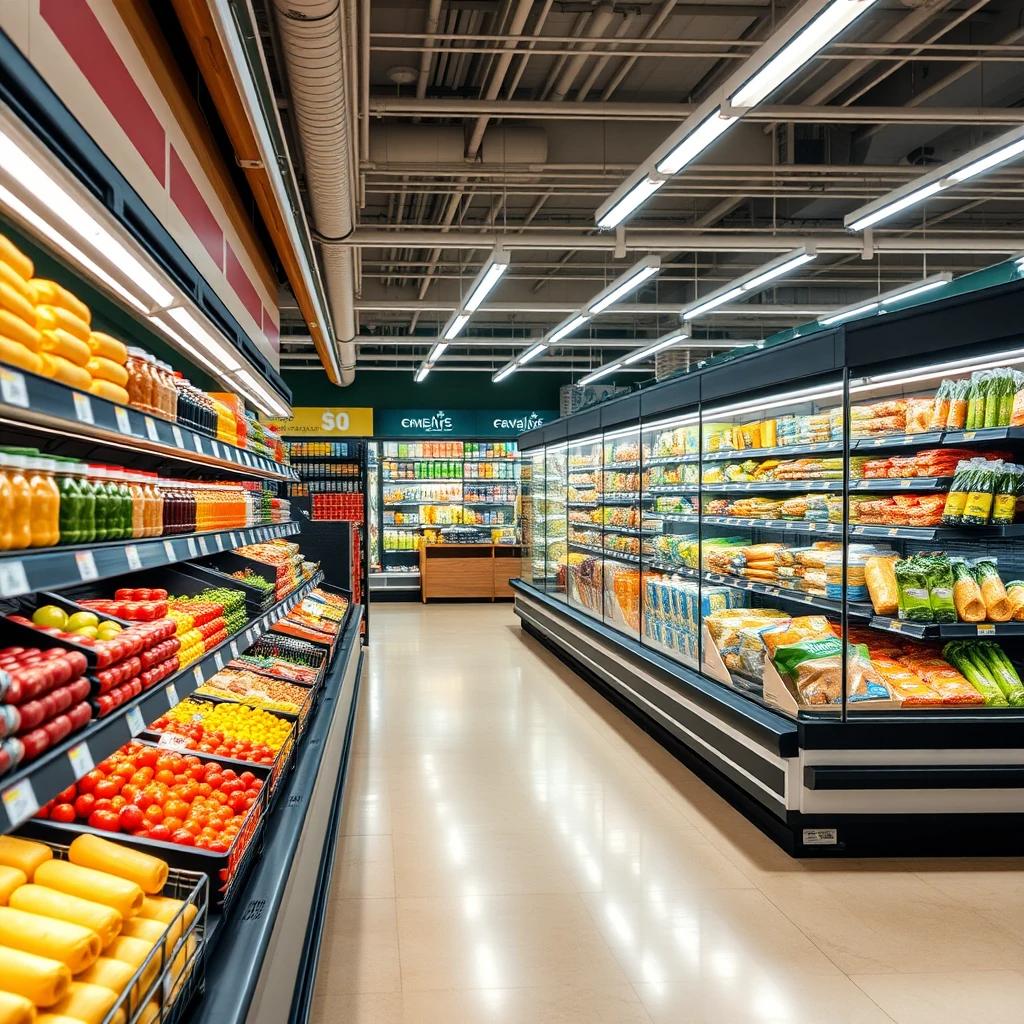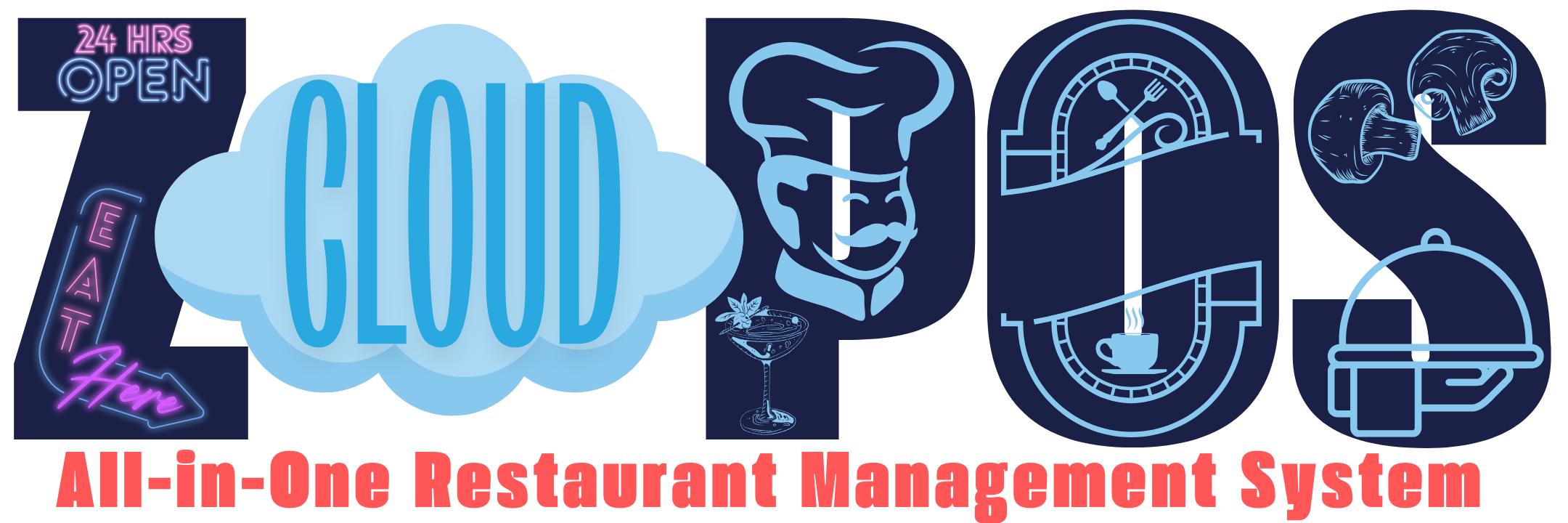Retail Grocery Stores with Ready-To-Eat Sections

Transform your grocery store operations with Z-Cloud POS, the ultimate cloud-based solution designed for retail stores offering ready-to-eat sections. Seamlessly manage inventory, track sales, and handle multiple product categories, including fresh meals, snacks, and beverages. With real-time inventory updates, automated stock alerts, and integrated recipe cost tracking, you can reduce waste and maximize profitability. Z-Cloud POS also enables efficient billing for both grocery and ready-to-eat items, making checkout faster and more convenient. Perfect for grocery stores, delis, and convenience stores with food sections, Z-Cloud POS ensures smooth operations and exceptional customer service.
The Z-Cloud RMS system offers features that can address the specific challenges faced by retail grocery stores that also have ready-to-eat sections. These stores need to manage both retail sales and food service operations. Here's a detailed look at how the POS system can assist:
Point of Sale and Transaction Management:
- Multiple Payment Methods: The system supports multiple payment methods like cash, card, and others, which is important for handling various customer preferences.
- Multiple Counters: The system supports multiple counters which is useful in a larger store with multiple checkout areas.
- Pre and Post Payment: The system allows for both pre and post-payment, which might be useful if the store has a cafe section where people pay after they eat.
- Multiple Currency Support: The system supports multiple currencies, which can be beneficial if the store is located in a tourist area or near an international border.
- Split Bill: The system can split bills, which is useful if customers want to pay separately when purchasing items from both the grocery and ready-to-eat sections.
- SMS Integration: The system can send order confirmations or updates via SMS to customers.
- Customer Display: The system can support a customer display, which can be used for showing transaction details or promotions.
- Open and Close Register: The system allows for opening and closing registers, which is important for end-of-day cash reconciliation.
Inventory and Stock Management:
- Ingredient Management: The system allows for detailed management of ingredients, including categories, units, purchase, and consumption. This is important for managing the ingredients used in ready-to-eat items, as well as the items sold in the grocery section.
- Stock Control: The system tracks stock, provides low stock alerts, and supports stock adjustments . This helps in managing both retail and ready-to-eat stock efficiently.
- Low Stock Alerts: The system alerts staff when stock levels are low, which ensures that popular items, both retail and ready-to-eat, are always available.
- Waste Tracking: The system tracks waste, which helps minimize losses, especially with perishable items in the ready-to-eat section .
- Stock Adjustment: The system allows for stock adjustments, which is useful for accounting for discrepancies between physical stock and records .
- Stock Transfer: The system supports stock transfers between outlets, which is useful if the business has multiple locations .
- Product Management: The system allows for management of products that are sold as purchased from a supplier and require no preparation. This can be used for items like bottled drinks and other pre-packaged goods in a retail setting.
Food and Menu Management:
- Food Menu Management: The system allows for detailed management of food menus, which is necessary for the diverse offerings of a ready-to-eat section.
- Food Menu Category: The system allows the organization of food items into categories, which is helpful for a store with diverse ready-to-eat offerings (e.g., sandwiches, salads, hot foods).
- Pre-Made Food: The system supports tracking of pre-made foods, such as sauces or baked goods.
- Item Variation: The system supports item variations, such as different sizes of portions or variations for dietary needs .
- Combo Items: The system supports the creation of combo items which can be used to create meal deals in the ready-to-eat section .
- Modifier: The system supports the use of modifiers, allowing customers to specify extras, add-ons, or substitutes .
- Recipe Management: The system tracks ingredient usage and costs, which helps manage the cost of preparing ready-to-eat food items.
- Ingredient Consumption: The system tracks ingredient consumption when making food items, which can help manage costs in the ready-to-eat section.
- Tax Settings: The system includes tax settings, which allows for the configuration of various tax rates, including different taxes for retail and food items.
Kitchen Operations (if applicable):
- Kitchen Panel: The system supports a Kitchen Display System (KDS), which provides real-time order information to the kitchen staff. This is useful for stores that prepare food on-site.
- Category-Wise Kitchen Panel: The system can route orders to specific kitchen panels based on food categories, which is useful for kitchens with multiple preparation areas.
- Real-time Order Status: The kitchen panel allows staff to update the status of orders, which is then communicated to the POS.
- Item Preparation Notes: The system allows the inclusion of preparation notes, which can help the kitchen staff with any special requests .
- Category Wise KOT Printer: The system allows the use of a category-wise KOT printer, which can automatically send orders to the correct printer in the kitchen based on the category.
Customer and Order Management:
- Multiple Order Types: The system supports dine-in, take-away, and delivery options, which is useful if the store offers a cafe section or delivers ready-to-eat meals.
- Delivery Management: The system provides delivery management, which allows for tracking and managing delivery orders .
- Multiple Delivery Address: The system supports multiple delivery addresses for customers, this could be useful if the store offers delivery of groceries or ready-to-eat meals .
- Self Order/QR Code Order: The system allows customers to place orders via QR codes, which can be useful for a self-service cafe section or for placing orders in a deli .
- Online Order: The system allows customers to place orders online, which expands the store's reach and provides convenience .
- Future Sales: The system allows adding orders for future processing, which may be useful for catering orders or pre-orders of ready-to-eat items.
- Loyalty Programs: The system supports customer loyalty programs, which can encourage repeat business .
- Customer Profile: The system allows for storing of customer profiles, which is useful for tracking customer preferences and purchase history.
- Customer Due Tracking: The system allows for tracking of customer due payments.
- Reservation: The system can handle reservations, which is useful if the store has a cafe or dining section that allows advance bookings .
Reporting and Analysis:
- Comprehensive Reports: The system provides various reports, including sales, stock, profit/loss, and consumption reports, which allows owners to monitor performance and make informed decisions .
- Product Analysis Report: The system allows analysis of product sales, which can help identify popular menu items and optimize the offerings of both the retail and ready-to-eat sections .
- Daily and Detailed Sales Reports: The system provides daily and detailed sales reports, useful for tracking revenue and trends .
- Consumption Report: The system provides a consumption report for ingredients, which can be useful for managing costs and minimizing waste .
- Profit Loss Report: The system provides profit loss reports for financial reconciliation .
- Register Report: The system provides register reports, which show transactions by payment method, useful for daily reconciliation at each point of sale .
- Z Report: The system provides Z reports for financial reconciliation .
- Business Intelligence Dashboard: The system has a dashboard that gives a quick overview of key metrics .
- Audit Log Report: The system provides an audit log report to track all changes and actions within the system .
- Low Stock Report: The system provides a low stock report, which is useful for managing inventory levels .
Additional Features:
- Employee Management: The system includes employee management with attendance tracking .
- Access Control: The system allows user management with access control, which enables configuration of user permissions based on roles .
- Offline Sync: The system continues to operate without an internet connection, ensuring uninterrupted service.
- Software Updates: The system has a software update feature to keep the software current .
- Multiple Outlets: The system can manage multiple outlets, which allows a business to manage multiple locations from a single system.
By utilizing these features, retail grocery stores with ready-to-eat sections can streamline their operations, manage inventory and food costs effectively, handle customer needs efficiently, and enhance the overall customer experience. The Z-Cloud RMS system provides a comprehensive solution for managing both retail sales and food service operations in this type of business.
To discuss more about your requrnements Contact Us
